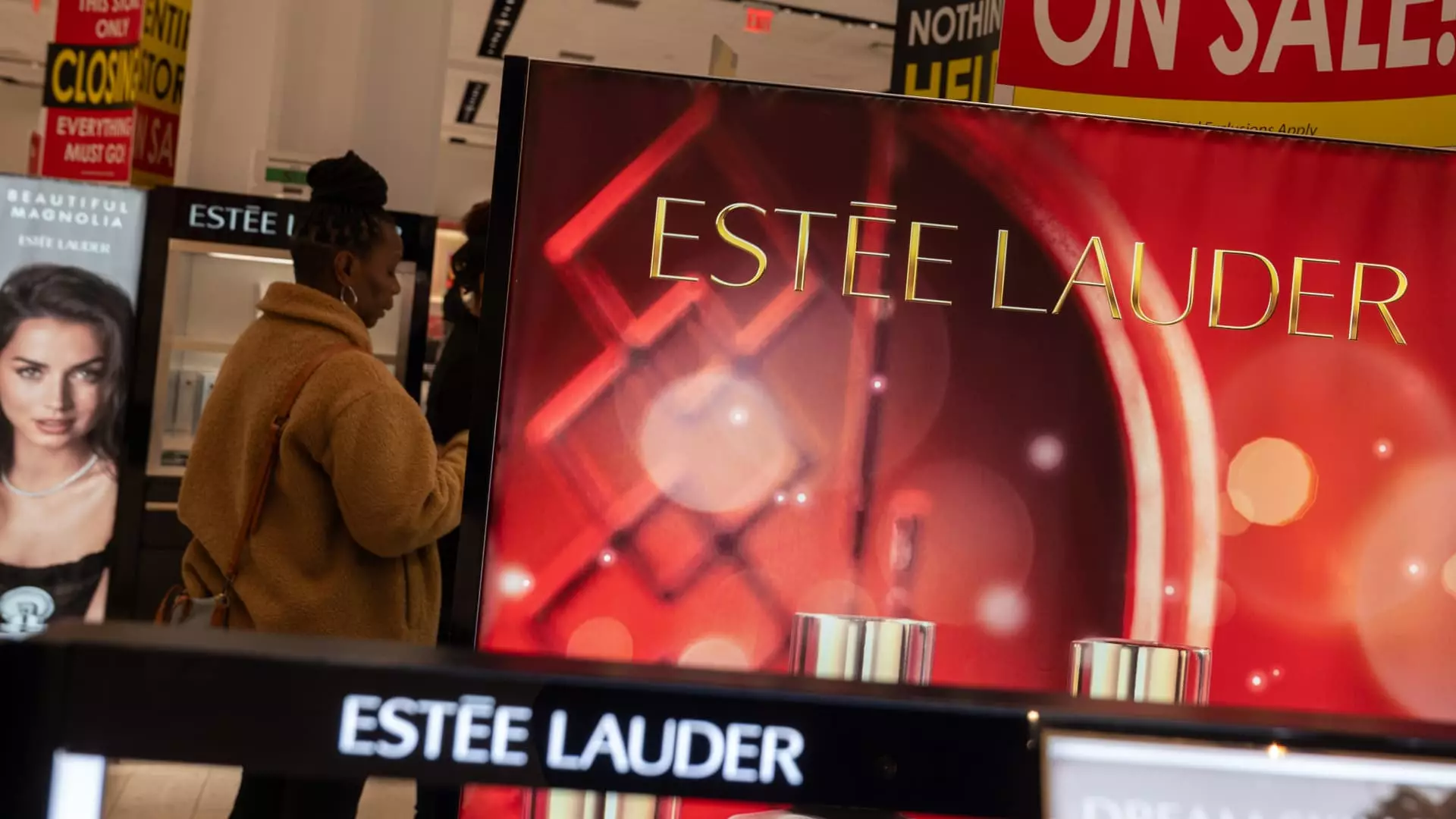The beauty sector appears to be experiencing turbulent times, as evidenced by major stock declines among popular companies such as E.l.f. Beauty and Estee Lauder. This week’s financial disclosures have sparked concern among investors and analysts alike. With shares in E.l.f. plummeting by nearly 29% within a five-day spans, it marks the brand’s worst performance since August 2018. The steep decline raises questions about consumer trends and the overall stability of the beauty market.
E.l.f. Beauty reported a mixed bag of financial figures for its fiscal third quarter. While the company managed to surpass revenue expectations, it fell short regarding adjusted earnings per share. This disappointing performance prompted the company to revise its full-year sales outlook downwards, estimating revenues to fall between $1.3 billion and $1.31 billion instead of the previously forecasted range of $1.32 billion to $1.34 billion. CEO Tarang Amin attributed the downturn to a sector-wide decline of 5% in January, suggesting that a post-holiday hangover and dwindling online interest in beauty products are significant contributors to this trend.
The woes don’t end with E.l.f., as Estee Lauder shares also faced a dramatic drop of 22% this week. The company announced substantial job cuts, predicting layoffs of between 5,800 and 7,000 employees by the end of fiscal 2026. This move is largely seen as a reaction to softened demand in travel retail markets in Asia, which has begun to adversely affect its anticipated net sales. Even with reports indicating a beat on both revenue and earnings in the second quarter, these job cut announcements overshadowed any positive news. CEO Stéphane de La Faverie bluntly addressed the company’s operational shortcomings during an earnings call, highlighting the inability to seize emerging growth opportunities.
Market analysts have reacted swiftly to these events, with firms like Morgan Stanley and UBS downgrading their ratings on E.l.f. stock to neutral or equal weight due to lowered guidance. This reflects a heightened sense of caution and skepticism regarding the company’s ability to recover in the short term. Similarly, other firms like Ulta Beauty and Coty reported pressure on shares, with declines of 9% and nearly 8% respectively, marking Ulta’s worst performance since the previous April. A statement made by Amin during the earnings call indicated that E.l.f. observed “a little bit of softness” at Ulta in January, which reinforces the idea that consumer interest in beauty products may be waning.
The beauty sector’s struggles are not isolated to company-specific issues; broader economic pressures are also a significant concern. New tariffs imposed by China in response to recent U.S. trade policies could potentially shrink profit margins for beauty brands that heavily rely on Chinese manufacturing, such as E.l.f., which produces roughly 80% of its products in China. Amin expressed a degree of relief at the lower-than-expected tariff rate of 10%, especially given fears of hikes that could have approached 60%.
The beauty industry stands at a precarious juncture, facing mounting challenges ranging from disappointing earnings reports to external economic pressures. As consumer behavior shifts and global politics intertwine with business strategies, brands may need to reevaluate their approaches to remain competitive. This week’s downturn serves as a timely reminder of the volatility in investor sentiment and the importance of agility in adapting to ever-changing market dynamics.

